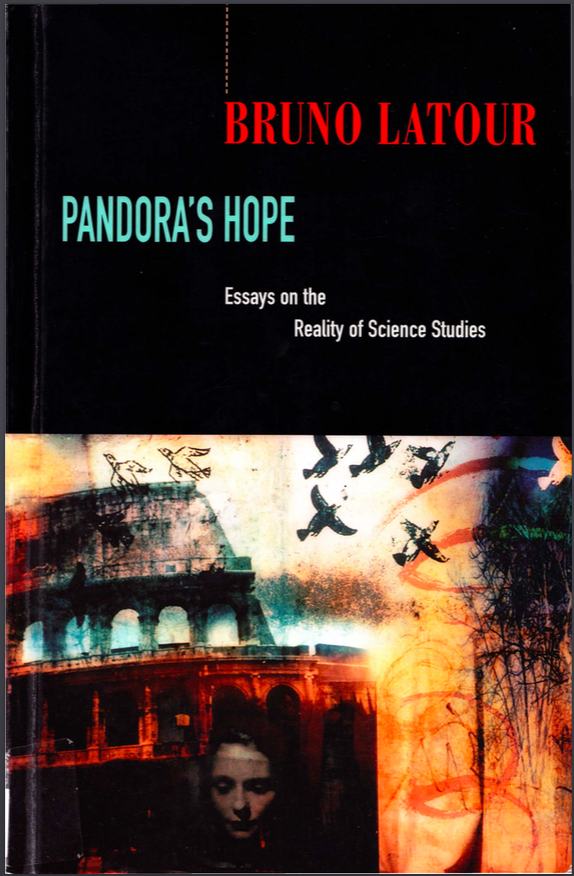
Não-humanos em Latour (1999)
LATOUR, Bruno. 1999. Pandora’s hope: essays on the reality of science studies. Cambridge: Harvard University Press.
ESTUDOS de CIÊNCIA MOSTRAM a VIDA DOS NÃO-HUMANOS no COLETIVO
If science studies has achieved anything, I thought, surely it has added reality to science, not withdrawn any from it. Instead of the stuffed scientists hanging on the walls of the armchair philosophers of science of the past, we have portrayed lively characters, immersed in their laboratories, full of passion, loaded with instruments, steeped in know-how, closely connected to a larger and more vibrant milieu. Instead of the pale and bloodless objectivity of science, we have all shown, it seemed to me, that the many nonhumans mixed into our collective life through laboratory practice have a history, flexibility, culture, blood – in short, all the characteristics that were denied to them by the humanists on the other side of the campus. (Latour 1999:2-3)
OBJETOS =/= NÃO-HUMANOS
Whereas objects had been made cold, asocial, and distant for political reasons, we found that nonhumans were close, hot, and easier to enroll and to enlist, adding more and more reality to the many struggles in which scientists and engineers had engaged. (Latour 1999:16)
QUANTO MAIS NÃO-HUMANOS NO COLETIVO, MAIS HUMANO ELE É
we tell the humanists that the more nonhumans share existence with humans, the more humane a collective is – and this too runs against what they have been trained for years to believe. (Latour 1999:18)
CIÊNCIA =/= PESQUISA
If Science thrived by behaving as if it were totally disconnected from the collective, Research is best seen as a collective experimentation about what humans and nonhumans together are able to swallow or to withstand. It seems to me that the second model is wiser than the former. (Latour 1999:20)
Research is this zone into which humans and nonhumans are thrown, in which has been practiced, over the ages, the most extraordinary collective experiment to distinguish, in real time, between “cosmos” and “unruly shambles” with no one, neither the scientists nor the “science students,” knowing in advance what the provisional answer will be. (Latour 1999:20)
REPRESENTAÇÃO
Instead of abandoning the base world of rhetoric, argumentation, calculation – much like the religious hermits of the past – scientists begin to speak in truth because they plunge even more deeply into the secular world of words, signs, passions, materials, and mediations, and extend themselves ever further in intimate connections with the nonhumans they have learned to bring to bear on their discussions. (Latour 1999:97)
REFERÊNCIA
The quality of a science’s reference does not come from some salto mortale out of discourse and society in order to access things, but depends rather on the extent of its transformations, the safety of its connections, the progressive accumulation of its mediations, the number of interlocutors it engages, its ability to make nonhumans accessible to words, its capacity to interest and to convince others, and its routine institutionalization of these flows (Latour 1999:97)
ALIANÇAS
The aliances do not pervert the pure flow of scientific information but are what makes this blood flow much faster and with a much higher pulse rate. Depending on the circumstances, these alliances can take innumerable forms, but this enormous labor of persuasion and liaison is never self-evident: there is no natural connection between a military man and a chemical molecule, between an industrialist and an electron; they do not encounter each other by following some natural inclination. This inclination, this clinamen has to be created, the social and material world has to be worked on to make these alliances appear, in retrospect, inevitable. This presents an immense and passionately interesting history, probably the most important for understanding our own societies: the history of how new nonhumans have become entangled in the existence of millions of new humans (Latour 1999:104)
GÊNESE DE UMA ENTIDADE
By drawing on several seemingly incompatible philosophies of science, Pasteur provides a fresh solution to what is still a subject of much controversy in epistemology, namely, how a new entity can emerge out of an old one. It is possible to go from a nonexistent entity to a generic class by passing through stages in which the entity is made of floating sense data, taken as a name of action, and then, finally, turned into a plantlike and organized being with a place within a well-established taxonomy. The circulation of reference does not take us, [as in other cases,] […] from one site of research to the next, from one type of trace to the next, but from one ontological status to the next. Here it is no longer just the human who transports information through transformation, but the nonhuman as well, surreptitiously changing from barely existing attributes into a full-blown substance. (Latour 1999:122)
OS DOIS PLANOS DO EXPERIMENTO
An experiment, as we just saw, is an action performed by the scientist so that the nonhuman can be made to appear on its own. The artificiality of the laboratory does not run counter to its validity and truth; its obvious immanence is actually the source of its downright transcendence. How could this apparent miracle be obtained? Through a very simple setup that has baffled observers for a long time and that Pasteur beautifully illustrates. The experiment creates two planes: one in which the narrator is active, and a second in which the action is delegated to another character, a nonhuman one […]. […] An experiment shifts out action from one frame of reference to another. Who is the active force in this experiment? Both Pasteur and his yeast. More precisely, Pasteur acts so that the yeast acts alone. (Latour 1999:129)
It is only because Pasteur has worked well and hard in his own plane that the ferment is allowed to live autonomously in its own plane. This crucial connection should not be broken. (Latour 1999:130, Fig 4.1)
AGÊNCIA NÃO-HUMANA
Am I, the analyst of Pasteur, explaining the closure of the controversy by appealing to his human, cultural, historical interests, or will I be forced to add to the balance the active role of the nonhumans he did so much to shape? (Latour 1999:130)
AS 4 APARENTES CONTRADIÇÕES
Pasteur points to [a] […] phenomenon that should imply at least four contradictory specifications – contradictory, that is, as long as we stick to the modernist theory of action […]: (1) the lactic acid ferment is wholly independent of any human construction; (2) it has no independent existence outside the work done by Pasteur; (3) this work should not be taken negatively as so many doubts about its existence, but positively as what makes it possible to exist; (4) finally, the experiment is an event and not the mere recombination of a fixed list of already present ingredients. (Latour 1999:139)
RETÓRICA LATOURIANA
If my solution appears woolly, readers should remember that I am attempting to redistribute the capacity of speech between humans and nonhumans: not a task that makes for a clear exposition! They should also remember that we have abandoned, as largely illusory, the demarcation between ontological and epistemological questions, which produces much of what passes for analytical clarity. (Latour 1999:141)
PROPOSIÇÃO como RELAÇÃO HUMANO/NÃO-HUMANO
I’d like to establish an entirely different model for the relations between humans and nonhumans by borrowing a term from Alfred North Whitehead, the notion of propositions (Whitehead [1929] 1978). Propositions are not statements, or things, or any sort of intermediary between the two. They are, first of all, actants. Pasteur, the lactic acid ferment, the laboratory are all propositions. What distinguishes propositions from one another is not a single vertical abyss between words and the world but the many differences between them, without anyone knowing in advance if these differences are big or small, provisional or definitive, reducible or irreducible. This is precisely what the word “pro-positions” suggests. They are not positions, things, substances, or essences pertaining to a nature made up of mute objects facing a talkative human mind, but occasions given to different entities to enter into contact. These occasions for interaction allow the entities to modify their definitions over the course of an event – in the present case, an experiment. (Latour 1999:141)
HISTORICIDADE NÃO-HUMANA
If we meant by “historicity” merely that our contemporary “representation” of microorganisms dates from the mid-nineteenth century, there would be no problem. We would have simply fallen back on the divide between ontological and epistemological questions that we had decided to abandon. To do away with this divide, we decided to grant historicity to the microorganisms, not only to the humans discovering them. This entails that we should be able to say that not only the microbes-for-us-humans changed in the 1850s, but also the microbes-for-themselves. Their encounter with Pasteur changed them as well. Pasteur, so to speak, “happened” to them. (Latour 1999:145-6)
O PENSÁVEL
What was unworkable and absurd in the subject-object fairy tale may become, if not easy, at least thinkable with the pair human-nonhuman. (Latour 1999:146)
DO MODO (bidimensional) DE EXISTÊNCIA DOS FATOS CIENTÍFICOS
[E]xistence is not an all-or-nothing property but a relative property which is conceived of as the exploration of a two-dimensional space made by association and substitution, AND and OR. An entity gains in reality if it is associated with many others that are viewed as collaborating with it. It loses in reality if, on the contrary, it has to shed associates or collaborators (human and non-human). Thus this […] does not include any final stage in which historicity will be surpassed, with the entity relayed into eternity by inertia, ahistoridty, and naturalness – although well-known phenomena like blackboxing, socialization, institutionalization, standardization, and training would be able to account for the seamless and ordinary ways in which they would be sustained and perpetuated. (Latour 1999:158)
LIBERDADE aos NÃO-HUMANOS
Nonhumans are born free, and everywhere they are in chains. (Latour 1999:172)
O COLETIVO PARA ALÉM DA NATUREZA E DA SOCIEDADE
We may then be able, finally, to understand these nonhumans, which are […] full-fledged actors in our collective; we may understand at last why we do not live in a society gazing out at a natural world or in a natural world that includes society as one of its components. Now that nonhumans are no longer confused with objects, it may be possible to imagine the collective in which humans are entangled with them. (Latour 1999:174-5)
ASSOCI-AÇÃO
The chimp plus the sharp stick reach (not reaches) the banana. The attribution to one actor of the role of prime mover in no way weakens the necessity of a composition of forces to explain the action. It is by mistake, or unfairness, that our headlines read “Man flies,” “Woman goes into space.” Flying is a property of the whole association of entities that includes airports and planes, launch pads and ticket counters. B-52s do not fly, the U.S. Air Force flies. Action is simply not a property of humans but of an association of actants […]. Provisional “actorial” roles may be attributed to actants only because actants are in the process of exchanging competences, offering one another new possibilities, new goals, new functions. Thus symmetry holds in the case of fabrication as it does in the case of use. (Latour 1999:182)
QUANDO O PROJETOR QUEBRA
Take, for instance, an overhead projector. It is a point in a sequence of action (in a lecture, say), a silent and mute intermediary, taken for granted, completely determined by its function. Now suppose the projector breaks down. The crisis reminds us of the projector’s existence. As the repairmen swarm around it, adjusting this lens, tightening that bulb, we remember that the projector is made of several parts, each with its role and function and its relatively independent goals. Whereas a moment before the projector scarcely existed, now even its parts have individual existence, each its own “black box.” In an instant our “projector” grew from being composed of zero parts to one to many. How many actants are really there? […] The repairmen fall into a routinized sequence of actions, replacing parts. It becomes clear that their actions are composed of steps in a sequence that integrates several human gestures. We no longer focus on an object but see a group of people gathered around an object. A shift has occurer d between actant and mediator. […] Thus the projector may count for one part, for nothing, for one hundred parts, for so many humans, for no humans – and each part itself may count for one, for zero, for many, for an object, for a group. (Latour 1999:183-4)
ABRINDO CAIXAS-PRETAS
Look around the room in which you are […]. Consider how many black boxes there are in the room. Open the black boxes; examine the assemblies inside. Each of the parts inside the black box is itself a black box full of parts. If any part were to break, how many humans would immediately materialize around each ? How far back in time, away in space, should we retrace our steps to follow all those silent entities that contribute peacefully to your reading this chapter at your desk? Return each of these entities to step 1; imagine the time when each was disinterested and going its own way, without being bent, enrolled, enlisted, mobilized, folded in any of the others’ plots. From which forest should we take our wood? In which quarry should we let the stones quietly rest? (Latour 1999:185)
SHIFTING-DOWN
An object stands in for an actor and creates an asymmetry between absent makers and occasional users. Without this detour, this shifting down, we would not understand how an enunciator could be absent: either it is there, we would say, or it does not exist. But through shifting down another combination of absence and presence becomes possible. In delegation it is not, as in fiction, that I am here and elsewhere, that I am myself and someone else, but that an action, long past, of an actor, long disappeared, is still active here, today, on me. I live in the midst of technical delegates; I am folded into nonhumans. (Latour 1999:189)
“Technical” also designates a very specific type of delegation, of movement, of shifting down, that crosses over with entities that have a different timing, different spaces, different properties, different ontologies, and that are made to share the same destiny, thus creating a new actant. Here the noun form is often used as well as the adjective, as when we say “a technique of communication,” “a technique for boiling eggs.” In this case the noun does not designate a thing, but a modus operandi, a chain of gestures and know-how bringing about some anticipated result. […] If one ever comes face to face with a technical object, this is never the beginning but the end of a long process of proliferating mediators, a process in which all relevant subprograms, nested one into another, meet in a “simple” task. (Latour 1999:192)
OBJETO-INSTITUIÇÃO
Instead of the legendary kingdom in which subjects meet objects, one generally finds oneself in the realm of the personne morale, of what is called the “body corporate” or the “artificial person.” Three extraordinary terms! As if the personality became moral by becoming collective, or collective by becoming artificial, or plural by doubling the Saxon word body with a Latin synonym, corpus. A body corporate is what we and our artifacts have become. We are an object-institution. […] There is no sense in which humans may be said to exist as humans without entering into commerce with what authorizes and enables them to exist (that is, to act). […] Purposeful action and intentionality may not be properties of objects, but they are not properties of humans either. They are the properties of institutions, of apparatuses, of what Foucault called dispositifs. Only corporate bodies are able to absorb the proliferation of mediators, to regulate their expression, to redistribute skills, to force boxes to blacken and close. […] Real artifacts are always parts of institutions, trembling in their mixed status as mediators, mobilizing faraway lands and people, ready to become people or things, not knowing if they are composed of one or of many, of a black box counting for one or of a labyrinth concealing multitudes (Latour 1999:192-3)
NÃO-HUMANOS =/= OBJETOS
In the modernist settlement, objects were housed within nature and subjects within society. We have now replaced objects and subjects with scientific facts and technical artifacts, which have an entirely different destiny and shape. Whereas objects could only face out at the subjects – and vice versa – nonhumans may be folded into humans through the key processes of translation, articulation, delegation, shifting out and down. (Latour 1999:193)
COLETIVO
the notion of collective – defined as an exchange of human and nonhuman properties inside a corporate body (Latour 1999:193)
SOCIALIZAÇÃO de NÃO-HUMANOS
We want analytical clarity, too, but following different lines than the one drawn for the polemical tug of war between objects and subjects. The name of the game is not to extend subjectivity to things, to treat humans like objects, to take machines for social actors, but to avoid using the subject-object distinction at all in order to talk about the folding of humans and nonhumans. What the new picture seeks to capture are the moves by which any given collective extends its social fabric to other entities. This is what I have meant, until now, by the provisional expression “Science and technology are what socialize nonhumans to bear upon human relations.” This is the makeshift expression I had forged as a substitute for the modernist expression: “Science and technology allow minds to break away from society to reach objective nature, and to impose order on efficient matter.” (Latour 1999:193-4)
QUANTO MAIS NÃO-HUMANOS, MAIS HUMANOS
The relation between the scale of collectives and the number of nonhumans enlisted in their midst is crucial. One finds, of course, longer chains of action in “modern” collectives, a greater number of nonhumans (machines, automatons, devices) associated with one another, but one must not overlook the size of markets, the number of people in their orbits, the amplitude of the mobilization: more objects, yes, but many more subjects as well. Those who have tried to distinguish these two sorts of collective by attributing “objectivity” and “efficiency” to modern technology and “humanity” to low-tech poesis have been deeply mistaken. Objects and subjects are made simultaneously, and an increased number of subjects is directly related to the number of objects stirred – brewed – into the collective. The adjective modern does not describe an increased distance between society and technology or their alienation, but a deepened intimacy, a more intricate mesh, between the two. (Latour 1999:195-6)
AMODERNO
The most important consequence of getting beyond the Homo faber myth is that, when we exchange properties with nonhumans through technical delegation, we enter into a complex transaction that pertains to “modern” as well as to traditional collectives. If anything, the modern collective is the one in which the relations of humans and nonhumans are so intimate, the transactions so many, the mediations so convoluted, that there is no plausible sense in which artifact, corporate body, and subject can be distinguished. In order to take account of this symmetry between humans and nonhumans, on the one hand, and this continuity between traditional and modern collectives, on the other, social theory must be somewhat modified. (Latour 1999:197)
ORDEM SOCIAL NÃO-HUMANA
[M]ost of the features of what we mean by social order – scale, asymmetry, durability, power, hierarchy, the distribution of roles – are impossible even to define without recruiting socialized nonhumans. Yes, society is constructed, but not socially constructed. Humans, for millions of years, have extended their social relations to other actants with which, with whom, they have swapped many properties, and with which, with whom, they form collectives. (Latour 1999:198)
PROMISCUIDADE
Socialness is shared with nonhumans in an almost promiscuous way. (Latour 1999:204)
GENEALOGIA LATOURIANA
[T]he point of my little genealogy is […] to identify […] properties borrowed from the social world in order to socialize nonhumans and properties borrowed from nonhumans in order to naturalize and expand the social realm. For each layer of meaning, whatever happens happens as if we are learning, in our contacts with one side, ontological properties that are then reimported to the other side, generating new, completely unexpected effects. (Latour 1999:204)
INDÚSTRIA como SOCIALIZAÇÃO DE NÃO-HUMANOS
The extraordinary feat of what I will call industry is to extend to matter a further property that we think of as exclusively social, the capacity to relate to others of one’s kind, to conspecifics, so to speak. Nonhumans have this capacity when they are made part of the assembly of actants that we call a machine: an automaton endowed with autonomy of some sort and submitted to regular laws that can be measured with instruments and accounting procedures. From tools held in the hands of human workers, the shift historically was to assemblies of machines, where tools relate to one another, creating a massive array of labor and material relations in factories that Marx described as so many circles of hell. The paradox of this stage of relations between humans and nonhumans is that it has been termed “alienation,” dehumanization, as if this were the first time that poor and exploited human weakness was confronted by an all-powerful objective force. However, to relate nonhumans together in an assembly of machines, ruled by laws and accounted for by instruments, is to grant them a sort of social life. […] Indeed, the modernist project consists in creating this peculiar hybrid: a fabricated nonhuman that has nothing of the character of society and politics yet builds the body politic all the more effectively because it seems completely estranged from humanity. This famous shapeless matter, celebrated so fervently throughout the eighteenth and nineteenth centuries, which is there for Man’s – but rarely Woman’s – ingenuity to mold and fashion, is only one of many ways to socialize nonhumans. They have been socialized to such an extent that they now have the capacity to create an assembly of their own, an automaton, checking and surveying, pushing and triggering other automata, as if with full autonomy. (Latour 1999:206)
MEGAMÁQUINA como MAQUINAÇÃO de HUMANOS
Lewis Mumford has made the intriguing suggestion that the megamachine – the organization of large numbers of humans via chains of command, deliberate planning, and accounting procedures – represents a change of scale that had to be made before wheels and gears could be developed […]. At some point in history human interactions come to be mediated through a large, stratified, externalized body politic that keeps track, through a range of “intellectual techniques” (writing and counting, basically), of the many nested subprograms for action. When some, though not all, of these subprograms are replaced by nonhumans, machinery and factories are born. The nonhumans, in this view, enter an organization that is already in place and take on a role rehearsed for centuries by obedient human servants enrolled in the imperial megamachine. […] Before it is possible to delegate action to nonhumans, and possible to relate nonhumans to one another in an automaton, it must first be possible to nest a range of subprograms for action into one another without losing track of them. Management, Mumford would say, precedes the expansion of material techniques. More in keeping with the logic of my story, one might say that whenever we learn something about the management of humans, we shift that knowledge to nonhumans and endow them with more and more organizational properties. (Latour 1999:207)
ORDEM SOCIAL NÃO-HUMANA (Durkheim)
What Durkheim mistook for the effect of a sui generis social order is simply the effect of having brought so many techniques to bear on our social relations. It was from techniques, that is, the ability to nest several subprograms, that we learned what it means to subsist and expand, to accept a role and discharge a function. By reimporting this competence into the definition of society, we taught ourselves to reify it, to make society stand independent of fast-moving interactions. We even learned how to delegate to society the task of relegating us to roles and functions. Society exists, in other words, but is not socially constructed. Nonhumans proliferate below the bottom line of social theory. (Latour 1999:209)
NÃO-HUMANOS RESOLVEM A CONTRADIÇÃO ENTRE DURABILIDADE e NEGOCIAÇÃO
Nonhumans stabilize social negotiations. Nonhumans are at once pliable and durable; they can be shaped very quickly but, once shaped, last far longer than the interactions that fabricated them. Social interactions are extremely labile and transitory. More precisely, either they are negotiable but transient or, if they are encoded (for instance) in the genetic makeup, they are extremely durable but difficult to renegotiate. The involvement of nonhumans resolves the contradiction between durability and negotiability. It becomes possible to follow (or “blackbox”) interactions, to recombine highly complicated tasks, to nest subprograms into one another. What was impossible for complex social animals to accomplish becomes possible for prehumans – who use tools not to acquire food but to fix, underline, materialize, and keep track of the social realm. Though composed only of interactions, the social realm becomes visible and attains through the enlistment of nonhumans – tools – some measure of durability. (Latour 1999:210)
FERRAMENTA como EXTENSÃO DE HABILIDADES SOCIAIS A NÃO-HUMANOS
What, then, is a tool? The extension of social skills to nonhumans. (Latour 1999:211)
SOCIOTÉCNICO
My little origin myth makes apparent the impossibility of having an artifact that does not incorporate social relations, as well as the impossibility of defining social structures without accounting for the large role played in them by nonhumans. (Latour 1999:212)
HUMANOS E NÃO-HUMANOS TROCAM PROPRIEDADES
If the successive crossovers are summed up, a pattern emerges: relations among humans are made out of a previous set of relations that related nonhumans to one another; these new skills and properties are then reused to pattern new types of relations among nonhumans, and so on; at each (mythical) stage the scale and the entanglement increase. The key feature of this myth, is that, at the final stage, the definitions we can make of humans and nonhumans should recapitulate all the earlier layers of history. The further we go, the less pure are the definitions of humans and nonhumans. (Latour 1999:213, Fig. 6.9)
O HUMANO como RELAÇÃO SOCIOTÉCNICA
The mistake of the dualist paradigm was its definition of humanity. Even the shape of humans, our very body, is composed to a great extent of sociotechnical negotiations and artifacts. To conceive of humanity and technology as polar opposites is, in effect, to wish away humanity: we are sociotechnical animals, and each human interaction is sociotechnical. We are never limited to social ties. We are never faced only with objects. This final diagram [Fig. 6.9] relocates humanity right where we belong – in the crossover, the central column, the articulation, the possibility of mediating between mediators. (Latour 1999:214)
SCIENCE No.2: cosmic heterogenesis
The second meaning of the adjective “scientific” is the gaining of access, through experiments and calculations, to entities that at first do not have the same characteristics as humans do. This definition may seem odd, but it is what is alulded to by Weinberg’s own interest in “impersonal laws.” Science No. 2 deals with nonhumans, which in the beginning are foreign to social life, and which are slowly socialized in our midst through the channels of laboratories, expeditions, institutions, and so on, as recent historians of science have so often de scribed. What working scientists want to be sure of is that they do not make up, with their own repertoire of actions, the new entities to which they have access. They want each new nonhuman to enrich their repertoire of actions, their ontology. Pasteur, for example, does not “construct” his microbes; rather his microbes, and French society, are changed, through their common agency, from a collective made up of, say, x entities into one made up of many more entities, including microbes. […] Let Science No. 2 be represented publicly in all its beautiful originality, that is, as what establishes new, unpredictable connections between humans and nonhumans, thus profoundly modifying what the collective is made of. Who defined it most clearly? Socrates […]: “In fact, Callicles, the experts’ opinion is that co-operation, love, order, discipline, and justice bind heaven and earth, gods and men. That’s why they call the universe an ordered whole, my friend, rather than a disorderly mess or an unruly shambles […]” (507e-508a). […] Far from taking us away from the agora, Science No. 2 – once clearly separated from the impossible agenda of Science, capital S – redefines political order as that which brings together stars, prions, cows, heavens, and people, the task being to turn this collective into a “cosmos” instead of an “unruly shambles.” For scientists such an endeavor seems much more lively, much more interesting, much more adapted to their skill and genius, than the boring repetitive chore of beating the poor undisciplined demos with the big stick of “impersonal laws.” This new settlement is not the one Socrates and Callicles agreed on “appealing to one form of inhumanity to avoid inhumane social behavior” – but something that could be defined as “collectively making sure that the collective formed by ever vaster numbers of humans and nonhumans becomes a cosmos.” (Latour 1999:259-61)
POR QUE HUMANOS/NÃO-HUMANOS vira SUJEITOS/OBJETOS?
Why is it that associations of humans and nonhumans always become, once clarified, rectified, and straightened out, something so utterly different: two opposing sides in a war between subjects and objects? (Latour 1999:266-7)
PENSAMENTO HÍBRIDO
Thought is seized, modified, altered, possessed by nonhumans, who, in their turn, given this opportunity by the scientists’ work, alter their trajectories, destinies, histories. (Latour 1999:282)
AS 2 TAREFAS do COLETIVO
An objective nature facing a culture is something entirely different from an articulation of humans and nonhumans. If nonhumans are to be assembled into a collective, it will be the same collective, and within the same institutions, as the humans whose fate the sciences have brought nonhumans to share. Instead of this bipolar power source – nature and society – we will have only one, clearly identifiable source of politics for humans and nonhumans alike, and one clearly identifiable source for new entities socialized into the collective. […] The word “collective” itself at last finds its meaning: it is that which collects us all in the cosmopolitics envisaged by Isabelle Stengers. Instead of two powers, one hidden and indisputable (nature) and the other disputable and despised (politics), we will have two different tasks in the same collective. The first task will be to answer the question: How many humans and nonhumans are to be taken into account? The second will be to answer the most difficult of all questions: Are you ready, and at the price of what sacrifice, to live the good life together? That this highest of political and moral questions could have been raised, for so many centuries, by so many bright minds, for humans only without the nonhumans that make them up, will soon appear, I have no doubt, as extravagant as when the Founding Fathers denied slaves and women the vote. (Latour 1999:297)
NÃO-HUMANO (glossário)
NONHUMAN: This concept has meaning only in the difference between the pair “human-nonhuman” and the subject-object dichotomy. Associations of humans and nonhumans refer to a different political regime from the war forced upon us by the distinction between subject and object. A nonhuman is thus the peacetime version of the object: what the object would look like if it were not engaged in the war to shortcut due political process. The pair human-nonhuman is not a way to “overcome” the subject-object distinction but a way to bypass it entirely. (Latour 1999:308)

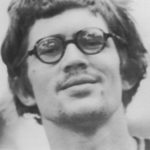
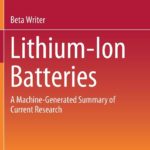
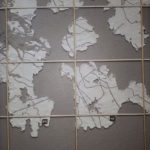
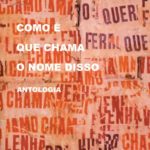
 O LaSPA é sediado no Instituto de Filosofia e Ciências Humanas (
O LaSPA é sediado no Instituto de Filosofia e Ciências Humanas (